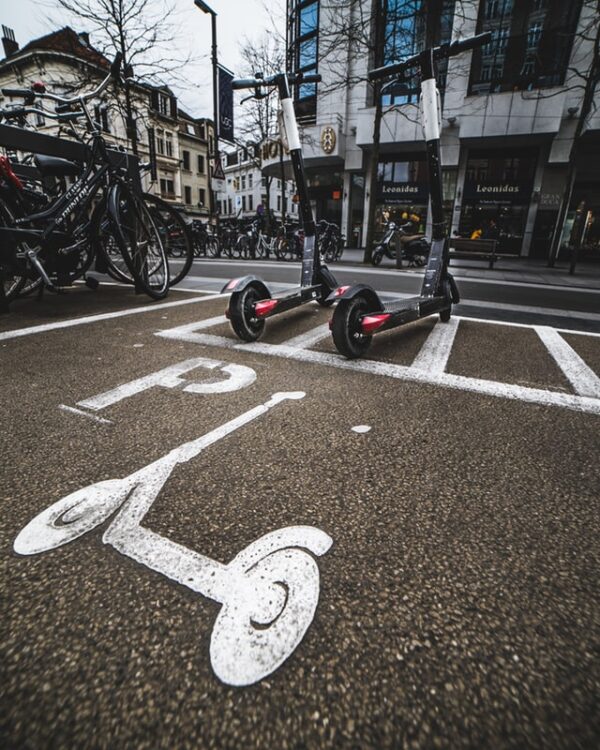If you’re torn between the choice of an electric scooter vs. hoverboard and seeking answers regarding their differences, abilities, safety, ease of use, and cost, you’re in the right place.
In this guide I’ll break down the electric scooter or hoverboard debate and help you make an informed choice.

Electric scooters vs hoverboards
For transportation and commuting, electric scooters are superior to hoverboards. Electric scooters are safer, easier to use, faster, have more range, climb better, and are better suited for heavier adults. Consider a hoverboard over an electric scooter only if you are looking for a fun new rideable and are not too concerned with practicality.
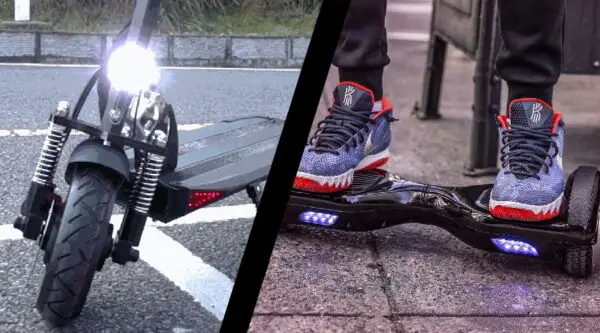
Safety

Hoverboards are often considered the least safe among rideables, especially for beginners.
The absence of handles is a key factor contributing to hoverboards’ safety concerns.
Learning to ride a hoverboard is relatively simple but more challenging than riding an electric scooter. Falling is more common when using a hoverboard, both during the learning process and afterward.
On the other hand, when riding an electric scooter, you need to maintain balance, but they are relatively easy to operate, with straightforward acceleration and steering, which makes them a safer option compared to hoverboards.
Price
In the budget category, hoverboards and electric scooters will have comparable prices. They will range anywhere from $200 to $600. The prices are about the same.
In the higher-end category, though, electric scooters are far more expensive. The most expensive scooters can cost more than $5000, or even $10000 in some cases. There is nothing in the hoverboard world that is even remotely close to that price yet.
We could say that electric scooters are more expensive because of that. But most people will shop in the budget or middle price range categories. Very few people will spend more than $1000 on a rideable.
To get a better picture, let’s compare a hoverboard and an electric scooter made by the same company.
For example, one of the best-selling hoverboards today, the Swagtron Swagboard Pro T1 is priced at $349.99. The Swagtron Swagger 5 Elite Electric Smart Scooter, which is their most iconic scooter, has the same price.
Ease of use
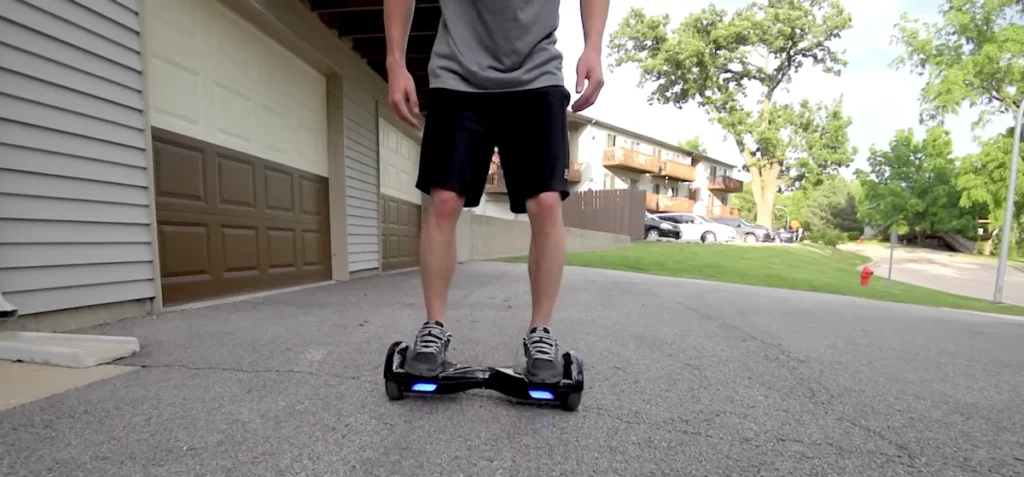

Both hoverboards and electric scooters are relatively easy to learn.
However, it’s important to note that hoverboards are slightly more challenging to handle compared to electric scooters.
Electric scooters are equipped with typical vehicle components like a throttle button, brake, and a handlebar for steering and turning. Learning how to ride an electric scooter typically takes only a few minutes, and most people can pick it up in under five minutes.
Hoverboards, on the other hand, have a more futuristic design. They rely on body movements for acceleration, deceleration, and turning.
Adjusting to this method and developing spatial awareness may require some time to become comfortable.
Portability
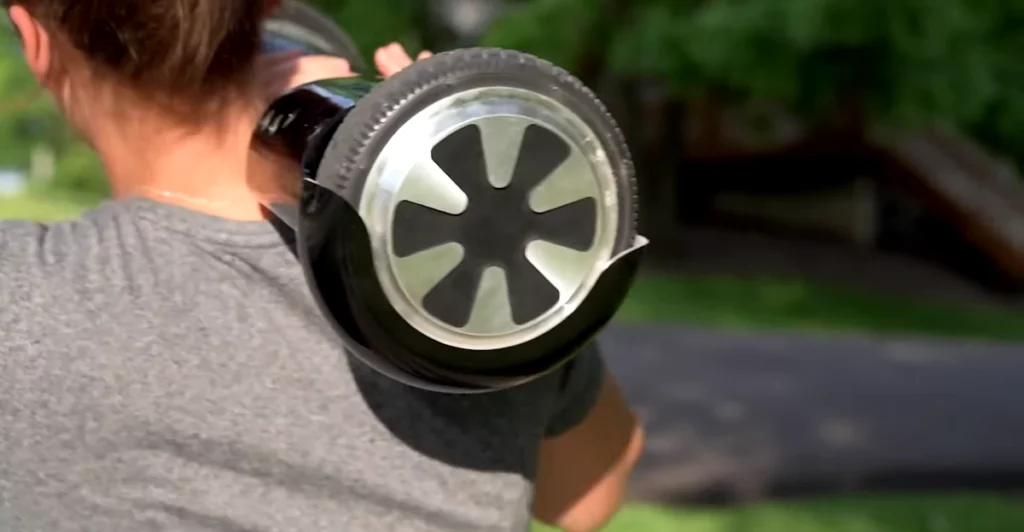
Clearly, hoverboards take the lead in this aspect.
On average, hoverboards weigh approximately 26 lbs /12kg, with only a few models exceeding 33 lbs / 15 kg.
In contrast, electric scooters have an average weight of about 46 lbs / 21 kg, nearly double that of hoverboards. Some electric scooter models can weigh 66+ lbs / 30+ kg, with a few going as high as 154 lbs / 70 kg.
In terms of portability, hoverboards are a single compact object with minimal protruding parts.
Electric scooters, when folded, are bulkier compared to hoverboards and come with a stem and a handlebar, making them less convenient to carry around.
Reliability
Electric scooters have a longer history than hoverboards and have gained public trust as a dependable mode of transportation.
The competition among electric scooter brands and manufacturers is fierce, driving the development of highly reliable electric scooters that can serve their owners for years without issues. This trend of increasing reliability is expected to continue.
While some reputable manufacturers produce high-quality hoverboards (often the same also manufacturing electric scooters), they haven’t yet reached the same level of reliability as electric scooters. Many view hoverboards as entertaining gadgets, especially for teenagers, rather than dependable transportation.
Power

Over the past decade, electric scooters have significantly evolved, emerging as vital urban transport in many major cities. This progress is mainly attributed to the increased power of their motors.
Hoverboards marketed as “off-road” typically feature motors exceeding 500 Watts, with very few, if any, exceeding 1000 Watts.
In contrast, numerous electric scooters boast such motor power. Even average scooters today routinely exceed 500 Watts in motor power, while the most powerful electric scooters sport motors with several thousand Watts.
The reason for hoverboards having less powerful motors is straightforward: they are not designed for high speeds, as their intended use differs from that of scooters.
Long distances
For covering long distances with a rideable, electric scooters are the evident choice. Even the electric scooters for kids surpass most hoverboards in terms of range.
Electric scooters offer a wide range of options, spanning from 6-93 mi / 10-150 km. Most electric scooters for adults provide a range exceeding 16 mi / 25 km, while long-range scooters go well beyond that.
The average range for electric scooters across all models today is about 23.8 mi / 38.35 km.
In comparison, hoverboards typically offer a range between 9 and 16 mi / 15 and 25 km on a single charge.
While hoverboards are also seeing improvements, only a few models exceed this range, with most falling within this range. There are currently no hoverboards with ranges exceeding 62 mi / 100 km, whereas numerous electric scooter models achieve such extensive ranges.
In the category of range, electric scooters emerge as the clear winner.
Speed
Even the fastest hoverboards won’t exceed 15 mph / 25 kmh, as they aren’t designed for high-speed travel.
In contrast, nearly all electric scooters can reach speeds greater than 15 mph / 25 kmh. Many super-fast electric scooters can achieve speeds well above 62 mph / 100 kmh.
While speeds of this magnitude are impractical for most individuals, traveling between 18-22 mph / 30-35 kmh is often beneficial, particularly for longer commutes on open, straight roads.
Climbing
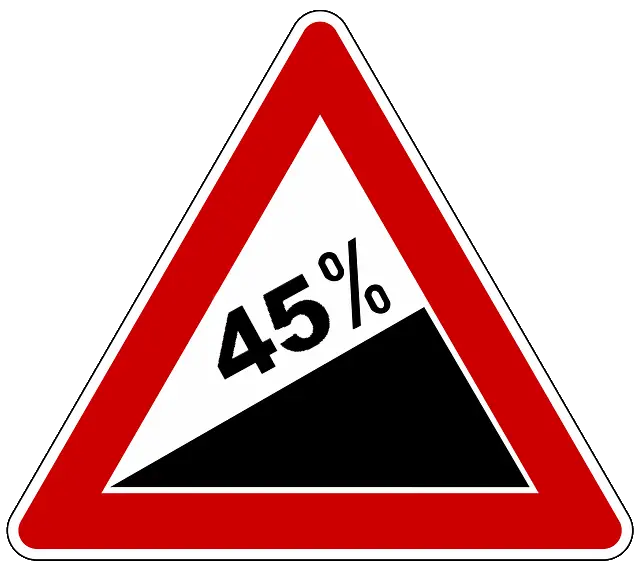
By now, you might have a good idea.
Electric scooters outperform hoverboards in climbing, primarily due to their higher motor power and, to some extent, battery capacity, which continues to grow over time.
On average, electric scooters can handle gradients of about 22 degrees, with specialized climbing scooters claiming even more impressive angles, exceeding 60 degrees.
Finding hoverboards capable of ascending slopes steeper than 20 degrees is uncommon. Despite their lighter weight, they have significantly less motor power.
When to get a hoverboard instead of an electric scooter?
Hoverboards will be a better choice for some children. In fact, that’s their primary use case.
There are only a handful of scenarios in which a hoverboard would be superior to an electric scooter for adults. Those are when your primary motivation is fun, novelty, or curiosity.
As we saw, hoverboards are typically a lesser means of transport in many regards. The only advantage they may have over electric scooters is that they are more recent, and thus might be more fun for some people.
When to get an electric scooter instead of a hoverboard?
Choosing between electric scooter or hoverboard is typically straightforward, at least for adults.
Unless you’re buying for a child, or you’re absolutely certain that a hoverboard will remain entertaining for you long-term, it’s wise to opt for an electric scooter.
For commuting or last-mile transportation, electric scooters are the obvious choice. Countless people worldwide already use electric scooters for their daily commute. This preference is evident in billion-dollar companies opting to rent electric scooters over hoverboards.
In almost 99% of cases, an electric scooter is the preferred choice over a hoverboard.


